SAP Change Management
Filter By
Browse By
- SAP Analytics and AI
- SAP Application Development and Integration
- All SAP Application Development and Integration
- SAP ABAP
- SAP ABAP Development Tools
- SAP ABAP Test Cockpit
- SAP API Management
- SAP BAPI
- SAP Basis
- SAP BRF
- SAP Business Application Studio
- SAP CMS
- SAP Design Studio
- SAP Development Tools
- SAP DevOps
- SAP EAI
- SAP EDI
- SAP Extension Suite
- SAP Fiori
- SAP Fiori Elements
- SAP Integration Suite
- SAP Low Code Application Development
- SAP Low Code Automation
- SAP Netweaver
- SAP Release Management
- SAP UI5
- SAP Web Application Server
- SAP Web IDE
- SAP Business Process Management
- SAP Center of Excellence
- SAP CIO
- SAP Customer Experience
- SAP Data and Data Management
- All SAP Data and Data Management
- SAP BW
- SAP BW/4HANA
- SAP Crystal Reporting
- SAP Data Archiving
- SAP Data Center
- SAP Data Governance
- SAP Data Integration
- SAP Data Migration
- SAP Data Quality
- SAP Data Services
- SAP Data Strategy
- SAP Data Visualization
- SAP Data Warehouse Cloud
- SAP DMS
- SAP Document Control
- SAP EIM
- SAP ETL
- SAP ETL Tools
- SAP HANA
- SAP HANA Administration
- SAP HANA Deployment Infrastructure
- SAP HANA Studio
- SAP Master Data
- SAP Master Data Governance
- SAP MDM
- SAP Enterprise Architect
- SAP Enterprise Asset Management
- SAP ERP
- SAP Finance
- All SAP Finance
- SAP Accounting
- SAP AR AP
- SAP Asset Accounting
- SAP Billing Systems
- SAP BPC
- SAP BRIM
- SAP Cash Management
- SAP Central Finance
- SAP Controlling
- SAP COPA
- SAP Cost Center Accounting
- SAP e-invoicing
- SAP FICO
- SAP Finance Automation
- SAP Financial Closing Cockpit
- SAP Financial Consolidation
- SAP Financial Planning
- SAP FX Risk
- SAP General Ledger
- SAP Global Tax Management
- SAP Hyperion
- SAP Order to Cash
- SAP Payment Processing
- SAP Profitability Analysis
- SAP Rebate Management
- SAP S/4HANA Finance
- SAP Universal Journal
- SAP Governance Risk and Compliance
- SAP Human Capital Management
- SAP Intelligent Technologies
- SAP Platform and Technology
- All SAP Platform and Technology
- SAP Business Technology Platform
- SAP Cloud Connector
- SAP Cloud Integration Platform
- SAP Cloud Migration
- SAP Cloud Platform
- SAP Cloud Providers
- SAP Cloud Strategy
- SAP Container Platform
- SAP Digital Asset Management
- SAP Digital Integration Hub
- SAP Digital Signature
- SAP HANA Enterprise Cloud
- SAP HEC
- SAP Hyperscalers
- SAP Infrastructure
- SAP Messaging
- SAP Smart Forms
- SAP Quality and Testing
- SAP Security
- SAP Spend Management
- SAP Supply Chain Management
- All SAP Supply Chain Management
- SAP APO
- SAP Asset Management
- SAP Business Network
- SAP Digital Manufacturing Cloud
- SAP Digital Twin
- SAP EWM
- SAP IBP
- SAP Inventory Management
- SAP Label Printing
- SAP Logistics
- SAP Manufacturing
- SAP Manufacturing Automation
- SAP MES
- SAP MII
- SAP MM
- SAP MRO
- SAP MRP
- SAP Order Management
- SAP Plant Maintenance
- SAP PLM
- SAP Production Planning
- SAP S&OP
- SAP SD
- SAP SPM
- SAP Supply Chain Planning
- SAP Track and Trace
- SAP Transportation Management
- SAP System Administration
SAP Change Management
The demand of business for rapid innovation to support digital transformation has increased across all organizations. Non-SAP applications, especially those on the cloud, are often deployed within months. In an SAPInsider survey on Change Management and Testing for SAP Change Management and Testing in SAP, 40% of respondents said their goal was rapid deployment of updates and upgrades with 61% wanting to reduce business risk and 42% wanting negligible disruption.
SAP Change Management
The demand of business for rapid innovation to support digital transformation has increased across all organizations. Non-SAP applications, especially those on the cloud, are often deployed within months. In an SAPInsider survey on Change Management and Testing for SAP Change Management and Testing in SAP, 40% of respondents said their goal was rapid deployment of updates and upgrades with 61% wanting to reduce business risk and 42% wanting negligible disruption.
Change management is critical is such scenarios to make sure developers know what is changing, what the impact of changes are and plan for seamless rollouts that minimize business downtime. Change management is the process of managing, planning, scheduling, and controlling a software build through testing and deploying in the production environment. The end goal is successful deployment of all planned changes into the production environment.
Like a well-orchestrated supply chain, change management ensures the rollout of series of changes (called release cycle) to achieve the product rollout. There can be major releases which are long projects taking from 1-3 years and minor releases which may take days or weeks.
SAP provides change management capabilities to plan and execute change execution. Some of the benefits of the capabilities are:
- Reduced risk through extensive testing
- Less business risks
- Better test system environment through better planning
- Increased productivity due to standardization, schedules and roles
- Better planning and tracking of implementation activities
The release process involves several stages of the release cycle
- Scoping – documenting the requirements and developing the IT requirements
- Building – developing the software changes for a certain release cycle
- Testing – testing the changes through various tests such as user acceptance, regression and integration testing
- Deploying – implements the technical cutover of the release by importing all transports into production, which is managed using SAP Solution Manager.
System integrators and consultants such as Cognizant, Microexcel, TechMahindra,
SAP Solution Manager has long been used to plan, create packages for deployment, and assign requirements and changes to a release. SAP ChaRM is an SAP Solution Manager tool to manage processes that occur in a transition from concept to testing until final advertising and Production. We can track changes and transport requests for change management systems throughout the entire business system. SAP Solution Manager Project will keep track of which requests for transport are linked to which projects and in what order they have for import.
Many specialized vendors have rolled out innovative products to manage change such as Panaya, Rev-Trac, and ServiceNow. As more and more customers move to a continuous integration/continuous deployment (CI/CD) or Agile/DevOps approaches, there is significant effort to plan and track all the changes. Strong collaboration, planning and automation of processes including testing and rollover are required.
Read this case study to learn how a Government Organization Improved Its ChaRM Release Strategy and Release Management Process.
401 results
-

- SAP Access Control
 Premium
Premium
SAP Access Control Implementation: The Myths, Truths, and Tricks (Part 2)
Reading time: 21 mins
Correct certain assumptions about the SAP Access Control system that are not necessarily true and obtain guidance on how to meet specific complex business requirements during an implementation project, including maintenance and support activities. Key Concept Myth is often the result of wishful thinking about the capability of a product that most times is unfounded…....…
-

SAP Access Control Implementation: The Myth, Truth, and Tricks (Part 2)
Reading time: 20 mins
Correct certain assumptions about the SAP Access Control system that are not necessarily true and obtain guidance on how to meet specific complex business requirements during an implementation project, including maintenance and support activities. This content is for Basic Access, SAPinsider Monthly Subscription, SAPinsider Annual Subscription, and SAPinsider Premium Annual Subscription members only.Log In Join…
-

Using SAP Solution Manager 7.2 Enhancements: What You Need to Know About the Latest Release
Reading time: 25 mins
Released in 2016, SAP Solution Manager 7.2 introduced a new process management architecture providing one simplified process landscape for the business and IT, along with enhanced functionality such as a new SAPUI5-based user experience, cloud & hybrid solution support, transparent requirements to deploy project management, and SAP Solution Manager 7.2 can run on SAP HANA…....…
-
-

- SAP Release Management
 Premium
Premium
Manage an SAP Production Release Using Standard Implementation Routines and ChaRM Maintenance Cycles
Reading time: 10 mins
Manager Learn about the functional tasks and routines necessary to run an SAP production release using Change Request Management (ChaRM) maintenance cycles. Discover the recommended cross-industry best practices that change managers or release managers can use to deliver production fixes and system enhancements to an implemented SAP solution. Key Concept Change management strategies and Change…...…
-

 Premium
Premium
Know the Risks and Benefits of 5 Change Validation Options for Interfaces to External Systems
Reading time: 13 mins
You can approach the common task of change validation in SAP ERP HCM in a number of different ways. Deciding among the options depends on the task at hand and the user’s experience, level of skill, and personal preference. See the pros and cons of five common options. Key Concept SAP ERP HCM users are…...…
-

 Premium
Premium
Monitor Sensitive Fields with R/3’s Dual Control Functionality
Reading time: 10 mins
The standard SAP dual control principle imposes segregation of duties for changes to sensitive fields while allowing changes to be made by one person to non-sensitive fields. Key Concept Dual control functionality forces changes made to sensitive fields in customer and vendor master records always to be checked by another authorized employee. Even if two…...…
-

- SAP Application Maintenance
 Premium
Premium
ChaRM Changes in Solution Manager 7.2: How to Transition Your Existing ChaRM Configuration Risk Free
Reading time: 14 mins
Learn how the new Solution Documentation in SAP Solution Manager 7.2 affects the configuration and administration of Change Request Management (ChaRM) and what to address when upgrading existing ChaRM functionality. Key Concept Change Request Management (ChaRM) with SAP Solution Manager requires several major changes to remain active after the upgrade to version 7.2. Some of…...…
-
-

 Premium
Premium
Manage Mass Changes in SuccessFactors Employee Central
Reading time: 9 mins
Currently many companies are interested learning how they can minimize the manual data entry for HR records. Using the automatic mass change function provided by SuccessFactors Employee Central, users will make fewer errors while maintaining data, especially for HR records. Learn the details about how you can perform mass changes on employee records for job…...…
-

 Premium
Premium
Optimize Your Software Change Process with Quality Gates
Reading time: 15 mins
ManagerLearn how to configure Quality Gate Management, which gives an integrated and consistent overview of all changes implemented in an SAP solution for all operational units in a company. Learn the basics of Quality Gate Management and its configuration steps as well as the corresponding Change Management Work Center interface features. Key Concept A quality…...…
-

 Premium
Premium
Distribute Critical Data Among Multiple SAP Systems by Using Change Pointers
Reading time: 31 mins
Using change pointers allows you to select exactly what data you want integrated systems to communicate to each other. See an example of the functionality with SAP ERP Central Component and SAP BusinessObjects Global Trade Services. Key Concept Application Linking and Enabling (ALE) enables communication between SAP applications. It allows you to define the master…...…
Featured Insiders
-

Steve Birgfeld
VP, Information Technology and Services at Blue Diamond Growers
-

Marie-Luise Wagener-Kirchner
Vice President, Product Management Finance and Risk – GRC Solutions
-

Darriel Dawne
VP, SAP Sustainability Marketing & Solutions
Become a Member
Unlimited access to thousands of resources for SAP-specific expertise that can only be found here.
Upcoming Events
Related Vendors
Your request has been successfully sent


